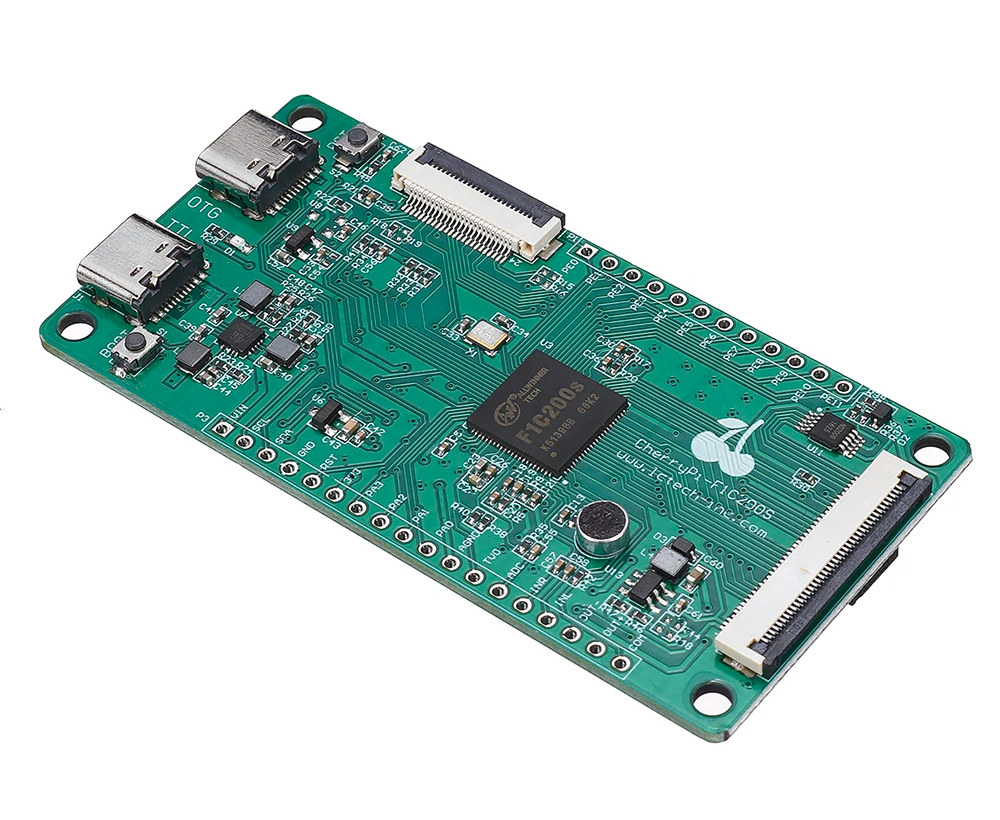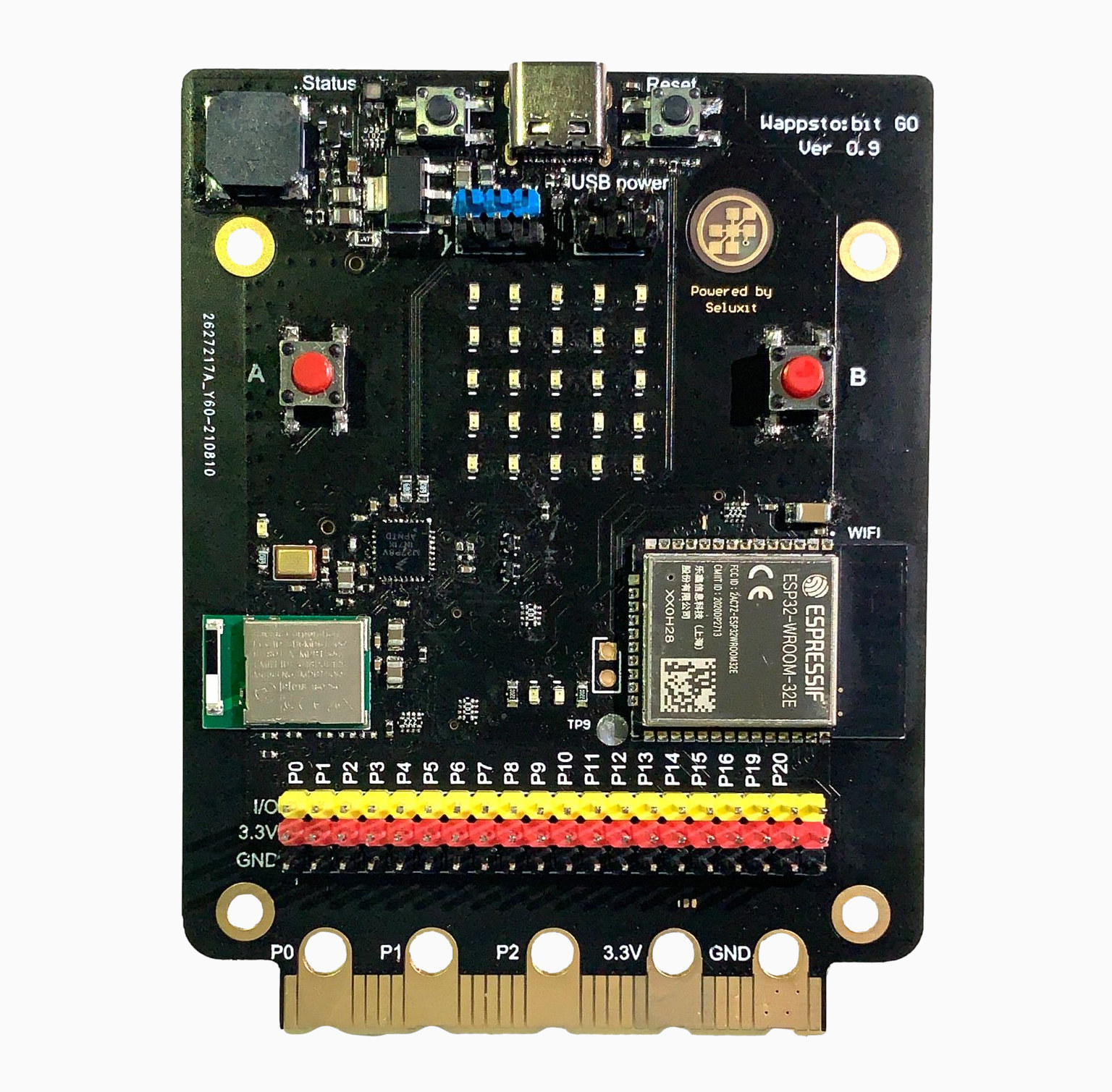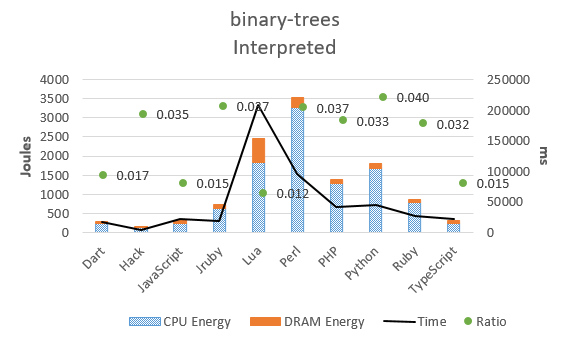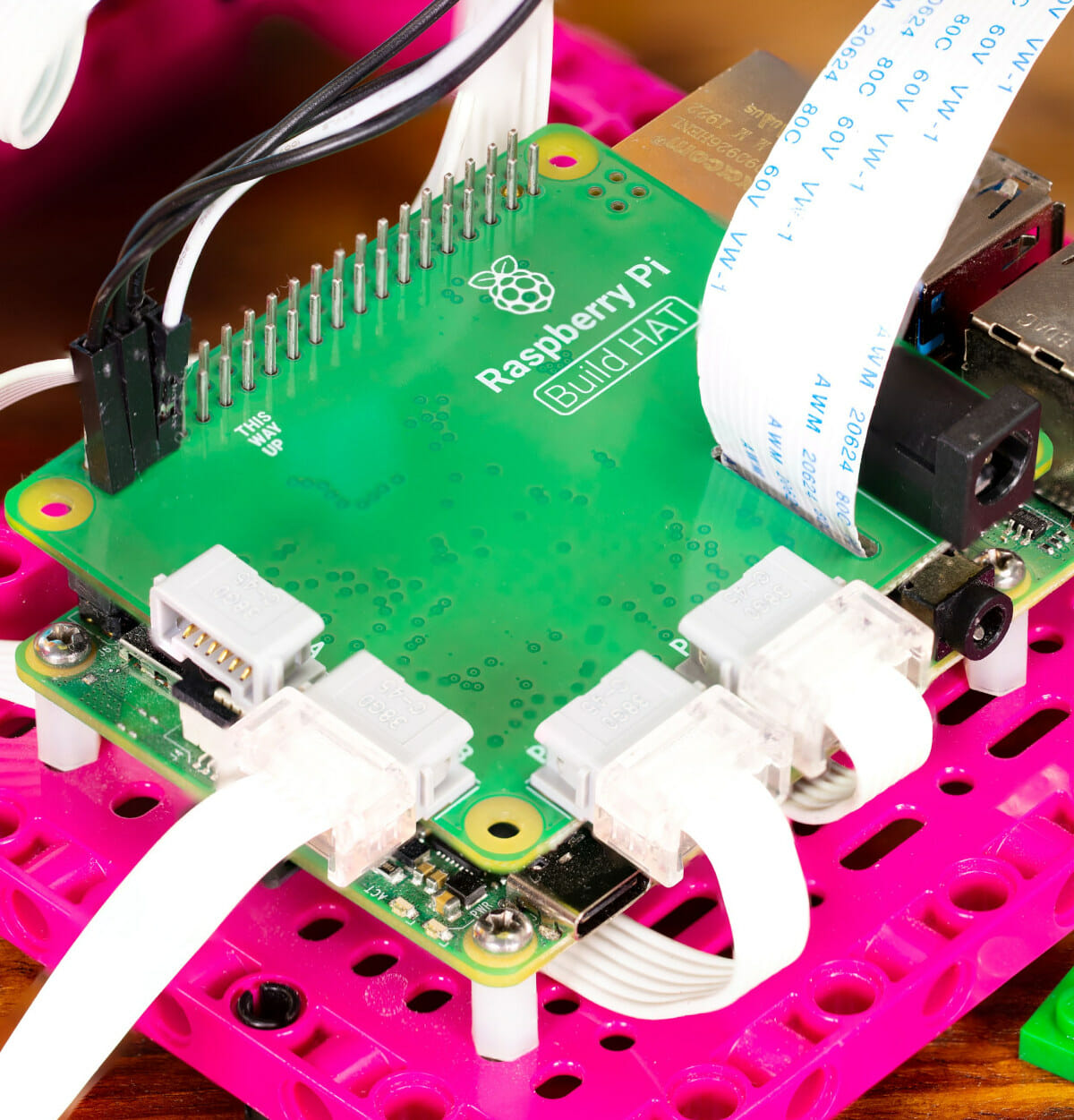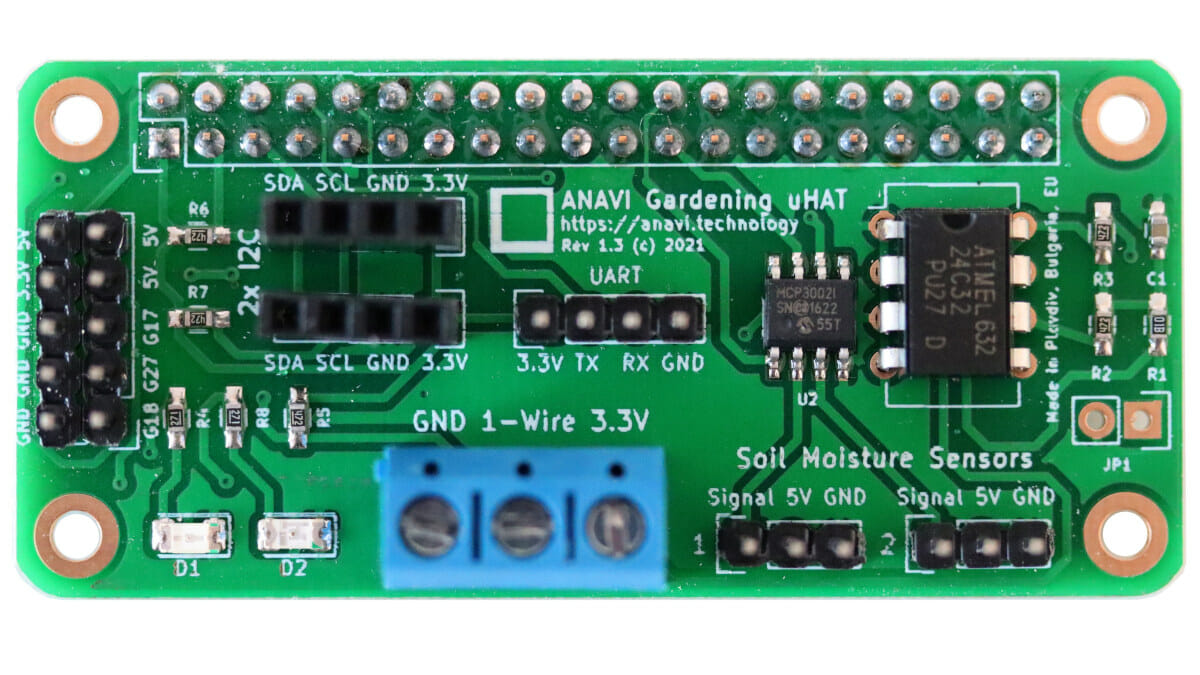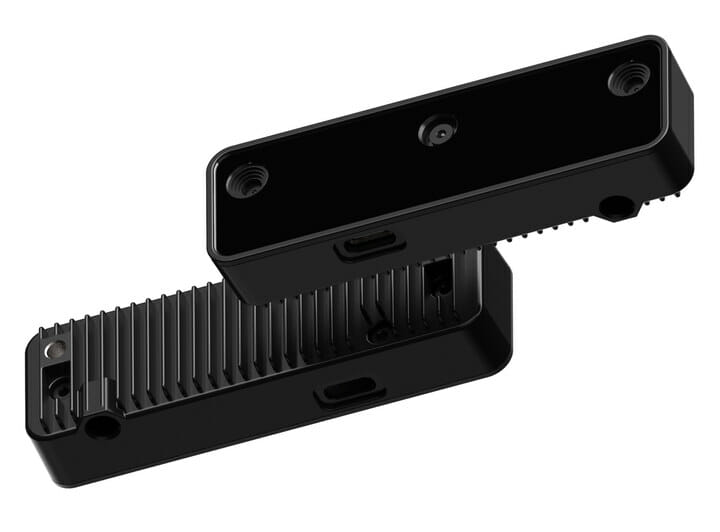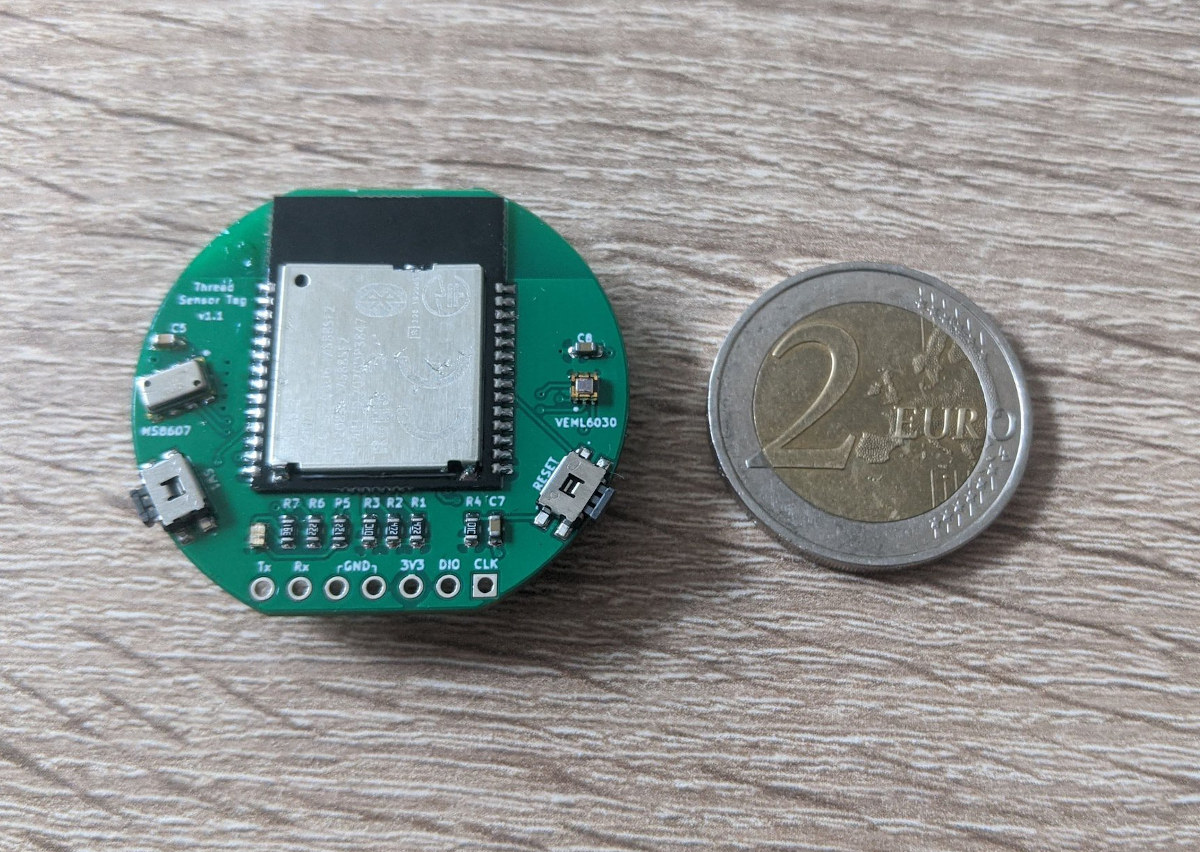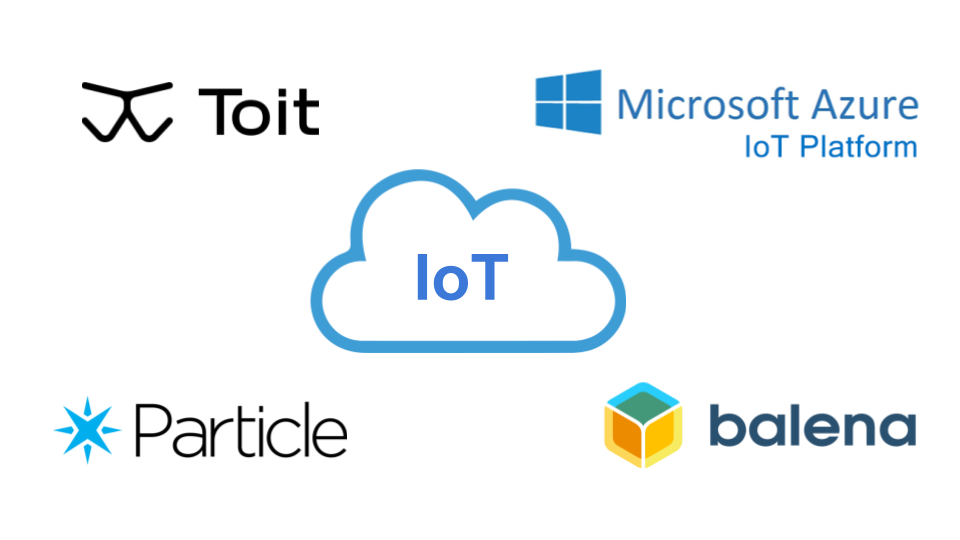I wrote about the Widora TINY200 board based on Allwinner F1C200s ARM9 processor with 64MB built-in RAM, up to 512MB NAND flash, LCD and camera interfaces in April 2020. I was just informed more similar Allwinner F1C200s boards had recently shown up with Widora MangoPi R3 that’s basically the same as TINY200, and CherryPi-F1C200S with similar dimensions and features, but a different ports arrangement. Let’s have a look at both. MangoPi R3 MangoPi R3 specifications are the same as the ones for Tiny200 board, but they selected the 128MB NAND flash storage option, and changed the USB-TTL chip: SoC – Allwinner F1C200s ARM926EJS processor @ 420 MHz (overclockable to 700 MHz) with 64MB DDR RAM Storage – 128MB NAND flash and MicroSD card slot Display I/F – 40-pin RGB565 display interface and 6-wire touch interface Camera I/F – 24-pin DVP camera interface compatible with OV2640, GC0328, etc. Audio – Onboard […]
Wappsto:bit GO – An ESP32 board with plenty of sensors, Micro:bit compatibility (Crowdfunding)
Wappsto:bit GO is an ESP32 board compatible with BBC Micro:bit accessories thanks to a compatible edge connector, but adding WiFi to Bluetooth LE, and offering some extras compared to Elecrow Mbits ESP32-based BBC Micro:bit clone. The new board is notably equipped with a wider range of sensors including a light sensor, a magnetometer, and sound sensor beside the temperature sensor and accelerometer present in the original board, and it also exposes GPIO through a more traditional 2.54-pitch header to facilitate the integration of a wider variety of add-on boards. Wappsto:bit GO specifications: Wireless modules ESP32-WROOM-32E module with ESP32 dual-core microcontroller, 4MB flash, 2.4 GHz WiFi and Bluetooth LE connectivity, built-in PCB antenna Raytac MDBT50Q-512K Bluetooth 5.2 module based on nRF52833 with 512KB Flash MCU – NXP Kinetis KL2 Arm Cortex-M0+ microcontroller (MKL27Z256VFM4 ) with 256KB Flash (for USB port handling) Display – 25 LED matrix Sensors Temperature sensor, Light sensor […]
Save the planet! Program in C, avoid Python, Perl
As a former software engineer who’s mostly worked with C programming, and to a lesser extent assembler, I know in my heart that those are the two most efficient programming languages since they are so close to the hardware. But to remove any doubts, a team of Portuguese university researchers attempted to quantify the energy efficiency of different programming languages (and of their compiler/interpreter) in a paper entitled Energy Efficiency across Programming Languages published in 2017, where they looked at the runtime, memory usage, and energy consumption of twenty-seven well-known programming languages. C is the uncontested winner here being the most efficient, while Python, which I’ll now call the polluters’ programming language :), is right at the bottom of the scale together with Perl. The study goes through the methodology and various benchmarks, but let’s pick the binary-trees results to illustrate the point starting with compiled code. To the surprise […]
LEGO Technic meets Raspberry Pi with the Build HAT
A new official Raspberry Pi expansion board is introduced today. The Built HAT provides four connectors for LEGO Technic motors and sensors from the SPIKE Portfolio, as well as an 8V DC jack to power both the Raspberry Pi and LEGO motors, sensors, LED matrix, and more. Designed in collaboration with LEGO Education, the Build HAT features the Raspberry Pi RP2040 dual-core ARM Cortex M0+ MCU for I/O control, and will enable more complex models benefiting from more powerful Broadcom BCM2xxx processors, as well as a Python library for easy programming. Build HAT key features and specifications: MCU – Raspberry Pi RP2040 microcontroller for low-level control of LEGO Technic devices 4x LPF2 connectors for LEGO Technic motors and sensors included in the SPIKE Portfolio 40-pin GPIO header for connection to Raspberry Pi 4 Model B, 3B+, 3B, 3A+, or Pi Zero family (Raspberry Pi 400 not supported) Misc – 2x […]
ANAVI Gardening uHAT adds soil and other sensors to Raspberry Pi (Crowdfunding)
We’ve been covering and reviewing ANAVI open-source hardware boards for several years now, either standalone boards based on ESP8266, or add-on boards for Raspberry Pi. The ANAVI Gardening uHAT is the latest board from Leon Anavi. It is a micro HAT designed for Raspberry Pi Zero to Raspberry Pi 4 SBCs that offers interfaces for soil sensors and other environmental sensors allowing measurements of soil moisture, atmospheric pressure and humidity, temperature with a waterproof sensor, and light intensity for gardening applications. ANAVI Gardening uHAT key features and specifications: Compatibility – Any Raspberry Pi board with a 40-pin GPIO header Storage – EEPROM for uHAT compliance 2x 3-pin headers for capacitive soil moisture sensors connected to Microchip MCP3002 ADC chip 3-pin One-wire terminal block for a waterproof temperature sensor 2x 4-pin I²C headers for additional sensors 10-header with GPIO pins for controlling irrigation systems and peripherals Misc – 2x user LEDs, […]
OpenCV AI Kit Lite – A compact 4K Tri-camera kit for computer vision applications (Crowdfunding)
The OpenCV AI Kit “OAK-D” now has a little brother with the OpenCV AI Kit Lite equipped with the same Intel Myriad X-based DepthAI solution with three cameras, but in a much compact form factor and a price slashed to as low as $79 and up. Like its predecessor, the OpenCV AI Kit leverage the Myriad X AI accelerator’s capabilities to provide a wide range of real-time computer vision applications, and can be programmed with C++ or Python APIs, as well as graphical user interfaces. OpenCV AI Kit Lite (OAK-D Lite) specifications: Intel Myriad X-based DepthAI with 4 TOPS of AI performance Cameras (made by ArduCam) Color Camera IMX214 (PLCC) with 4208×3120 resolution, 1.348:1 aspect ratio 1/3.1 inch Lens size 81.3 degrees DFOV Focus range 8cm – ∞ Stereo Camera specifications: Omnivision OV07251-G04A-1E (COB) with 640 x 480 resolution, 1.333:1 aspect ratio 1/7.5 inch lens size DFOV: 85.6,HFOV: 72.9, VFOV: […]
Coin cell-powered OpenThread sensor board can send data every 20 seconds for three years
Monkey Store’s Thread Sensor Tag is a pressure, humidity, temperature, and light sensor that connects to the OpenThread network, and is capable of transmitting MQTT/UDP data every 20 seconds over a period of around three years from a single coin cell battery. As a reminder, OpenThread is an implementation of the Thread IoT network protocol that was unveiled in 2016 by Nest Labs (now Google/Alphabet). This has not been widely used so far, but we did write about MKR SharkyPro development board with OpenThread support via STMicro STM32WB5MMG wireless module earlier this year, and Monkey Store is telling us both Google and Apple are working on devices with support for the IoT protocol. Thread Sensor Tag specifications: Wireless module – Minew MS88SF2 based on Nordic Semi nRF52840 multi-protocol 2.4GHz wireless Cortex-M4 microcontroller Sensor VEMLS6030 I2C light sensor MS8607 pressure, humidity, and temperature sensor I/Os – 7x through holes with Tx/Rx, […]
Microsoft Azure IoT, Balena, Particle, or Toit – Choosing the Right IoT Development Platform
With the ongoing fourth Industrial Revolution (Industry 4.0), IoT technologies are playing a major role in automating industrial processes. Integrating existing systems with IoT results in an intelligent solution that focuses more on providing better adaptability and resource efficiency. If you start building such systems from scratch while ensuring reliability and other factors, it will surely take a lot of research and time. This is where an IoT development platform steps in to save your time and makes things a lot easier. The main idea behind these platforms is to avoid reinventing the wheel and to provide standardized functions and features, so you don’t waste your time implementing something that someone has already done for you. You can collect data, control and manage apps and connect to their cloud services for better machine-to-machine communication. This article will look at some modern IoT development platforms and finally compare them to help […]


